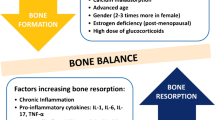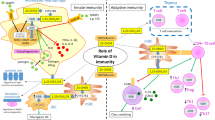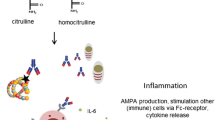Summary
The aim of this study was to evaluate serum levels of both soluble CD30 (sCD30) and soluble CD40 ligand (sCD40L) in patients with malignant bone tumours and to determine their ability to serve as serum markers. Sera of 31 patients were taken at the time of diagnosis, analysed by ELISA, and the results were correlated with clinical features and compared with healthy controls. Soluble CD30 and sCD40L levels were significantly higher in all patient groups than in the healthy controls. Soluble CD30 levels showed statistically significant differences between high malignant osteosarcoma and Ewing sarcoma (P = 0.015), whereas no statistically significant correlation was seen between different types of tumours and sCD40L levels. Soluble CD30 and sCD40L seem to be of diagnostic value in osteosarcoma and Ewing sarcoma.
Zusammenfassung
Das Ziel dieser Arbeit war es, die Serumspiegel von solublem CD30 und solublem CD40L bei Patienten mit malignen Knochentumoren zu evaluieren und ihre Fähigkeit als Serummarker zu bestimmen. Die Seren von 31 Patienten, abgenommen zum Zeitpunkt der Diagnosestellung, wurden mittels ELISA analysiert und die Ergebnisse mit klinischen Parametern und den Serumspiegeln von Gesunden korreliert. Die Serumspiegel von sCD30 und sCD40L waren bei allen Patientengruppen gegenüber den Kontrollpersonen signifikant erhöht. Die Spiegel von sCD30 zeigten statistisch signifikante Unterschiede zwischen Patienten mit malignem Osteosarkom und Ewing-Sarkom (P= 0.015), während sich keine Korrelation zwischen den unterschiedlichen Tumortypen und den sCD40L Spiegeln zeigte. Solubles CD30 und solubles CD40L scheint bei Osteosarkomen und Ewing-Sarkomen von diagnostischem Wert zu sein.
Similar content being viewed by others
References
Biehling B, Rehan N, Winkler P, Helmke K, Maas R, Fuchs N, Bielak S, Heis U, Jürgens H, Treuner J, Romanowsky R, Exner U, Kotz R, Winkler K: Tumor size and prognosis in aggressively treated osteosarcoma. J Clin Oncol 1996:14:848–858.
Clodi K, Asgary Z, Zhao S, Kliche KO, Cabanillas F, Andreeff M, Younes A: Coexpression of CD40 and CD40L in B-cell lymphoma cells. Br J Haematol 1998:103:270–275.
Enneking WF, Spanier SS, Goodman MA: A system for the surgical stagingofmusculoskeletalsarcomas. Clin Orthop 1980:153:106–120.
Gerli R, Muscat C, Bistoni O, Falini B, Tomassini C, Agea E, Tognellini R, Biagini P, Bertotto A: High levels of the soluble form of CD30 molecule in rheumatoid arthritis (RA) are expression of CD30+ T cell involvement in the inflamed joints. Clin Exp Immunol 1995;102:547–550.
Gerli R, Bistoni O, Lunardi C, Giacomelli R, Tomassini C, Biagini P, Pitzalis C: Soluble CD30 in early rheumatoid arthritis as a predictor of good response to second-line therapy. Rheumatol 1999:38:1282–1284.
Gerli R, Pitzalis C, Bistoni O, Falini B, Constantini V, Russano A, Lunardi C: CD30+ T cells in Rheumatoid Synovitis: Mechanisms of recruitment and functional role. J Immunol 2000;164:4399–4407.
Hansen Hinrich P, Kisselva T, Kobarg J, Horn-Lohrens O, Havsteen B, Lemke H: A zinc metalloproteinase is responsible for the release of CD30 on human tumor cell lines. Int J Cancer 1995:63:750–756.
Iwagaki H. Hizuta A, Kohka H, Kobashi K, Nitta Y, Isozaki H, Takakura N, Tanaka N: Circulating levels of soluble CD30 and other markers in colorectal cancer patients. J Med 1999:30:111–121.
Josimovic-Alasevic O, Durkop H., Schwarting R, et al. Ki-1 (CD30) antigen is released by Ki-1 positive tumor cells in vitro and in vivo. First partial characterization of soluble Ki-1 antigen and detection of the antigen in cell culture supernatants and in serum by an enzyme linked immunosorbent assay. EurJ Immunol 1989:19:157–162.
Lane P, Brocker T, Hubele S. Padovan E, Lanzavecchia A, McConell F: Soluble CD40L can replace the normal T-cell derived CD40L Signal to B cells inT cell dependent activation. J Exp Med 1993;177:1209–1213.
Lollini PL, Landuzzi L, Frabetti F, Rossi I, Nicoletti G, Scotlandi K, Serra M, Baldini N, De Giovanni C, Nanni P: Expression of functional CD40 on human osteosarcoma and Ewing’s sarcoma cells. Clin Cancer Res 1998:4:1843–1849.
Mechtersheimer G, Möller P: Expression of Ki-1 (CD30) antigen in mesenchymal tumors. Cancer 1990:66:1732–1737.
Meyers PA, Gorlick R: Osteosarcoma. Pedriatr Clin North Am 1997; 44:973–989.
Nadali G, Vinante F, Stein H, Todeschini G, Tecchio C, Morosato L, Chilosi M. Menestrina F, Kinney MC, Greer JP: Serum levels of the soluble form of CD30 molecule as a tumor marker in CD30+ anaplastic large-cell lymphoma. J Clin Oncol 1995;13:1355–1360.
Paulussen M, Ahrens S, Braun-Munzinger G, Craft AW, Dockhorn-Dworniczak B, Dorffei W, Dunst J, Fohlich B, Gobel U, Haussler M, Klingebiel T, Koscielniak E, Mittler U, Rübe C, Winkelmann W, Voute PA, Zoubek A, Jürgens H: E1CESS 92-European Intergroup Cooperative Ewing’s Sarcoma Study. Klin-Pädiatr 1999:211:276–283.
Pfreundschuh M, Pohl C, Berenbeck C, Schroeder J, Jung W, Schmits R, Tschiersch A, Diehl V, Gause A: Detection of a soluble form of the CD30 antigen in sera of patients with Lymphoma, Adult T-cell Leukemia and Infectious Mononucleosis. Int J Cancer 1990:45:869–874.
Salzer-Kuntschik M, Brand G, Delling G: Bestimmung des morphologischen Regressionsgrades nach Chemotherapie bei malignen Knochentumoren. Pathologe 1983;4:135.
Trieb K, Kotz R: Proteins expressed in osteosarcoma and serum levels as prognostic factors. Int J Biochem Cell Biol 2001;33:11–17.
Younes A, Snell V, Consoli U, Clodi K, Zhao S, Palmer JL, Thomas EK, Armitage RJ, Andreeff M: Elevated levels of biologically active soluble CD40L in the serum of patients with chronic lymphocytic leukemia. Br J Haematol 1998:100:135–141.
Author information
Authors and Affiliations
Corresponding author
Rights and permissions
About this article
Cite this article
Holzer, G., Pfandlsteiner, T., Blahovec, H. et al. Serum concentrations of sCD30 and sCD40L in patients with malignant bone tumours. WMW 153, 40–42 (2003). https://doi.org/10.1046/j.1563-258X.2003.02008.x
Issue Date:
DOI: https://doi.org/10.1046/j.1563-258X.2003.02008.x




